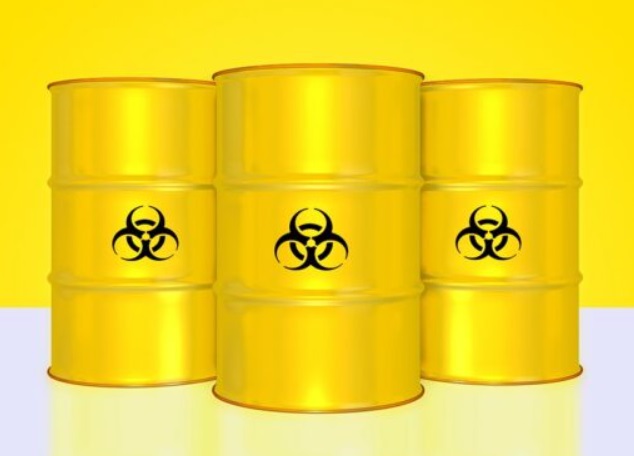Iran’s Secret Nuclear Energy Weapon: A New Threat Beyond Bombs
Tehran’s scientists are developing a low-enrichment nuclear-based weapon system that doesn't explode—but transmits destructive energy via cables. Western attacks may be targeting more than just bomb-making capabilities.
In the shadowy corridors of Iran’s nuclear research network, a different kind of weapon may be taking shape—one that doesn’t fit the mold of traditional nuclear arms.
According to intelligence analysts, scientific insiders, and satellite surveillance data reviewed by Global Watch, Iran has for years been pursuing a new form of nuclear-powered weapon that does not rely on detonation, but rather on the transmission of destructive energy via direct infrastructure, such as underground cable systems. While international headlines have long focused on Iran’s potential to build nuclear bombs, this lesser-known program—still speculative and shrouded in secrecy—is triggering alarm among defense communities in both the West and the Gulf region. And unlike classic nuclear warheads, this technology does not require uranium enriched to the 90% threshold needed for weapons-grade fissile material.
While international headlines have long focused on Iran’s potential to build nuclear bombs, this lesser-known program—still speculative and shrouded in secrecy—is triggering alarm among defense communities in both the West and the Gulf region. And unlike classic nuclear warheads, this technology does not require uranium enriched to the 90% threshold needed for weapons-grade fissile material.
“They don’t need 90% anymore,” says one European intelligence official under condition of anonymity. “They’re nearly at 70% enrichment now—and that’s already enough for this kind of system.”
Beyond the Bomb: A Weapon of Transferable Energy
The system under development, informally dubbed the “Directed Transfer Weapon” (DTW) by Western analysts, is believed to use sub-weapons or nodes connected via high-capacity, shielded cables to transmit bursts of destructive energy, theoretically capable of disabling or melting down infrastructure, military electronics, or even armored targets.
Though details remain scarce, the concept is rooted in advanced nuclear thermoelectric and plasma-channel technology, drawing energy from highly enriched uranium—not to produce explosions, but sustained, controllable, localized energy release.
Experts suggest this could be used in asymmetric warfare: disabling military bases, sabotaging urban grids, or rendering electronic defense systems inoperable—all without detonating a single bomb.
The Role of Enriched Uranium In conventional terms, uranium must be enriched to over 90% U-235 to fuel a nuclear bomb. Iran’s enrichment levels, while approaching dangerous thresholds, have remained officially below this benchmark—a key talking point in diplomatic negotiations.
In conventional terms, uranium must be enriched to over 90% U-235 to fuel a nuclear bomb. Iran’s enrichment levels, while approaching dangerous thresholds, have remained officially below this benchmark—a key talking point in diplomatic negotiations.
But this new system, according to physicists familiar with its theoretical basis, requires only 70% enriched uranium to function effectively, enabling Iran to bypass the political red line of full weapons-grade development.
“It’s a clever workaround,” says Dr. Emilio Navarro, a nuclear policy expert at the University of Geneva. “They stay under the limit, but still pursue a weapon that could dramatically shift the balance of power.”
Attacks That Weren’t About Bombs
Recent attacks on Iranian nuclear facilities—widely attributed to Israeli intelligence and cyber units—may not be aimed solely at preventing a nuclear bomb. Instead, multiple sources now suggest the real target is this parallel program.
The 2021 sabotage of the Natanz facility, for example, reportedly focused on centrifuge types not typically used for bomb-grade uranium but ideal for medium-level enrichment needed for energy-based applications. Similarly, the cyberattack known as “Meteor Flame,” detected in early 2023, appeared to target research nodes in underground laboratories outside Esfahan, far from bomb assembly zones.
“It’s not about preventing a mushroom cloud anymore,” one former Mossad analyst tells Global Watch. “It’s about stopping a system that can fry an airbase without firing a single missile.”
Strategic Implications A weaponized energy-transfer system would redefine nuclear deterrence. It could be deployed without triggering the international stigma or retaliation associated with a nuclear explosion. It might even escape detection until after its use.
A weaponized energy-transfer system would redefine nuclear deterrence. It could be deployed without triggering the international stigma or retaliation associated with a nuclear explosion. It might even escape detection until after its use.
Moreover, the system could be housed deep underground, shielded, and modular, making it harder to locate and neutralize. The mere suspicion of such capability could grant Iran significant geopolitical leverage.
However, a leaked IAEA internal report seen by Global Watch notes unexplained experiments involving “high-voltage thermonuclear conversion” and “cable-transmitted energy flux simulations”, conducted at off-grid facilities with military oversight.
As diplomatic talks stall and regional tensions rise, Western strategists are beginning to reconsider their approach. Is Iran moving toward a weapon that changes the rules of engagement entirely?
Conclusion: A New Kind of Threat
While the world watches for signs of a nuclear explosion, Iran may be moving in a different—yet equally dangerous—direction.
A nuclear weapon without a warhead, transmitted via cables, housed underground, and powered at 70% enrichment: the very concept challenges traditional arms control frameworks and strategic doctrines.
In the evolving theater of 21st-century conflict, this could be the most disruptive development in modern weapons technology—and one the world is only beginning to understand.